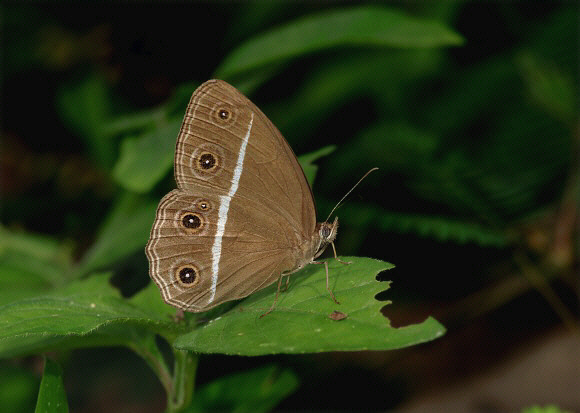
Introduction
Regrettably the popular name ‘Nigger’ was coined for this species in colonial times, and can cause unintended offence, but in the absence of an alternative we continue to use it here.
The genus Orsotriaena comprises of a single species medus. It bears a superficial resemblance to Mycalesis species but on the underside has only 2 ocelli on the forewing, and 3 on the hindwing. The upperside is dark brown and unmarked.
This is a very common and widespread species found in India, Sri Lanka, Nepal, Bhutan, Myanmar, Thailand, Malaysia, Sumatra, Borneo, Sulawesi, Timor, New Guinea, and north-eastern Australia.
Habitats
The Nigger is found in disturbed grassy habitats including forest glades, roadsides, and riverbanks at elevations between 0-600m.
Lifecycle
The egg is shiny, spherical, and straw-coloured. It is laid singly on blades and stems of grasses.
The larva when fully grown is a dirty whitish colour, with a faint suffused dark stripe along the back. The body segments are vertically wrinkled, and covered with tiny tubercules. There is a pair of pinkish caudal prongs projecting backwards from the anal segment. The head is pale brown and bestowed with a pair of long chestnut brown horns. The larva feeds nocturnally on Oryza sativa, Saccharum officinarum, and other grasses.
The chrysalis is yellow, stained with brownish, and has a long horn extending forward from the head. It is attached by the cremaster to the underside of a grass blade, or to a nearby stem.
Adult behaviour
The butterflies are mainly active at dawn and dusk, or on overcast days, but can be seen also in sunny conditions. They fly low and cover only very short distances, preferring to spend long periods at rest among leaf litter on the forest floor.
